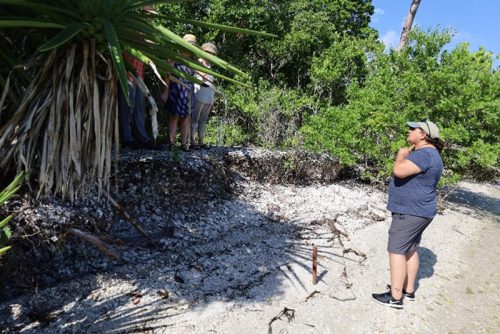Historical ecology serves as a valuable framework for exploring the interconnections between past environments and how humans persisted for millennia along physical and social landscapes.
By integrating ecological knowledge with archaeological research, the South Florida Archaeology Program investigates past dynamics of tropical and sub-tropical ecosystems and human-environmental interactions through this interdisciplinary approach. We explore how ancient peoples shaped and were shaped by their natural surroundings, examining factors such as land use practices, resource exploitation, and cultural adaptations. Ultimately this research highlights the long-standing relationships between people and their environments, providing valuable data for sustainable resource management practices and future ecosystem conservation.
Historical Ecology Fieldwork Spotlight:

The South Florida Archaeology lab is hard at work processing archaeological materials from a shell mound site in Bokeelia on the north side of Pine Island, Florida. Since 2016, archaeologists with the Florida Museum of Natural History and the Florida Public Archaeology Network (FPAN) have teamed up with the Calusa Land Trust in efforts to a) explore and monitor coastal shoreline erosion on the island; b) carry-out archaeological investigations to understand the stratigraphy and construction of the island over time; and c) research historical ecological changes in the paleoenvironment that impacted the estuarine habitats and the people relying on them for subsistence purposes. We are generating metric measurements on eastern oyster (Crassostrea virginica) remains from the site to understand changes in size of the animals through time, predation effects on oysters, health of the local oyster community, and how the shellfish from this site differ from those at other sites along Florida’s Gulf coast. Stay tuned for the results of the study!